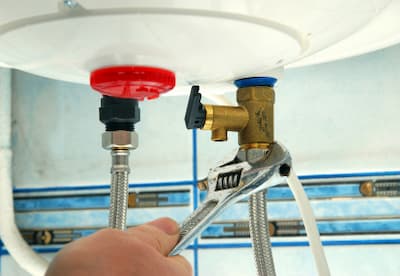How to Extend the Life of Your Home's Hot Water System Through Maintenance
How to Extend the Life of Your Home's Hot Water System Through Maintenance
Blog Article
What're your opinions concerning How to Maintain Your Water Heater & Prolong its Life?

Hot water is crucial for day-to-day comfort, whether it's for a rejuvenating shower or cleaning dishes. To guarantee your hot water system runs effectively and lasts much longer, regular upkeep is key. This post supplies functional tips and understandings on how to maintain your home's hot water system to prevent disruptions and expensive repairs.
Introduction
Preserving your home's warm water system may seem overwhelming, yet with a few straightforward actions, you can guarantee it runs efficiently for several years ahead. This guide covers everything from understanding your warm water system to do it yourself maintenance pointers and recognizing when to employ specialist assistance.
Value of Keeping Your Warm Water System
Normal maintenance not only expands the life-span of your warm water system however likewise guarantees it operates effectively. Ignoring maintenance can cause decreased effectiveness, higher energy expenses, and also early failing of the system.
Indications Your Warm Water System Demands Maintenance
Knowing when your warm water system requires attention can stop major issues. Keep an eye out for signs such as inconsistent water temperature, unusual sounds from the heating unit, or corroded water.
Understanding Your Warm Water System
Before diving into maintenance jobs, it's helpful to recognize the basic parts of your hot water system. Commonly, this consists of the water heater itself, pipes, anode poles, and temperature level controls.
Month-to-month Upkeep Tasks
Regular month-to-month checks can assist catch minor concerns prior to they intensify.
Flushing the Hot Water Heater
Flushing your hot water heater gets rid of debris build-up, boosting performance and extending its life.
Checking and Changing Anode Rods
Anode rods protect against rust inside the tank. Inspecting and replacing them when broken is crucial.
Inspecting and Changing Temperature Level Setups
Readjusting the temperature level settings makes certain optimum performance and safety.
DIY Tips for Maintenance
You can carry out a number of maintenance jobs yourself to keep your warm water system in leading condition.
Looking for Leaks
Regularly check pipelines and links for leaks, as these can cause water damages and greater bills.
Checking Pressure Relief Valves
Evaluating the pressure safety valve guarantees it operates appropriately and protects against extreme pressure accumulation.
Shielding Pipes
Protecting warm water pipelines decreases heat loss and can save power.
When to Call a Professional
While DIY upkeep is useful, some concerns need specialist proficiency.
Complicated Issues Calling For Professional Assistance
Instances include significant leakages, electric issues, or if your hot water heater is constantly underperforming.
Routine Specialist Maintenance Benefits
Expert maintenance can consist of complete assessments, tune-ups, and guaranteeing compliance with safety and security standards.
Verdict
Normal upkeep of your home's hot water system is necessary for performance, longevity, and cost financial savings. By adhering to these suggestions and knowing when to look for specialist aid, you can make certain a trustworthy supply of hot water without unexpected interruptions.
How to Maintain an Instant Hot Water Heater
Before tinkering with your hot water heater, make sure that it’s not powered on. You also have to turn off the main circuit breaker and shut off the main gas line to prevent accidents. Also turn off the water valves connected to your unit to prevent water from flowing into and out of the appliance. 2. When you’re done, you have to detach the purge valves’ caps. These look like the letter “T†and are situated on either side of the water valves. Doing so will release any pressure that has accumulated inside the valves while at the same time avoid hot water from shooting out and burning your skin. 3. When the purge valves’ caps are removed, you have to connect your hosing lines to the valves. Your unit should have come with three hoses but if it didn’t, you can purchase these things from any hardware or home repair shops. You can also get them from retail stores that sell water heating systems. Read the user’s manual and follow it to complete this task properly. When the hosing lines are connected, open the purge port’s valves. 4. You should never use harsh chemical cleaners or solutions when cleaning your unit. Make use of white vinegar instead. It should be undiluted and you’ll probably use about 2 gallons. 5. Now flush your water heater. This task should probably take about 40 minutes. We can’t give you specific directions for this because the procedure is carried out depending on the type, model and brand of your heater. With that being said, refer to the user’s manual. 6. When you’re done draining the unit, you have to turn off the purge port valves again. Remove the hosing lines that you earlier installed on each of the water valves. Put the valve caps (purge port) back in their respective places and be very careful so as not to damage the rubber discs that are found inside these caps. 7. Now that everything’s back in place, check your user’s manual again to find out how to reactivate your water heating system. 8. Once it is working, turn one of your hot water faucets on just to let air pass through the heater’s water supply pipes. Leave the tap on until water flows smoothly out of it. https://www.orrplumbing.com/blog/2014/september/how-to-maintain-an-instant-hot-water-heater/

As a devoted reader on Tips on Maintaining a Water Heater, I imagined sharing that information was essential. Enjoyed our blog posting? Please quickly share it. Let another person find it. Thanks a lot for taking the time to read it.
Contact Us Report this page